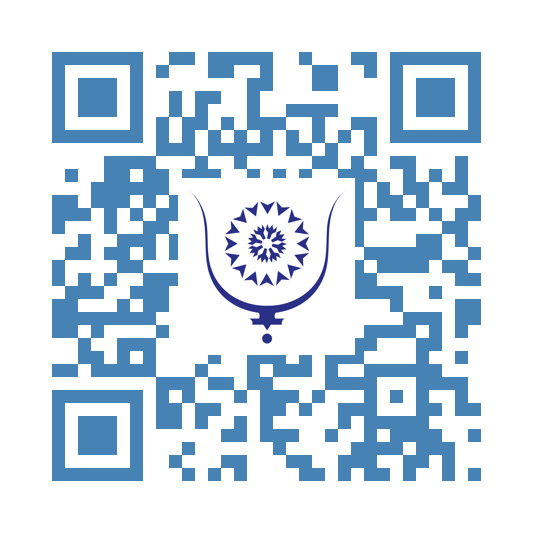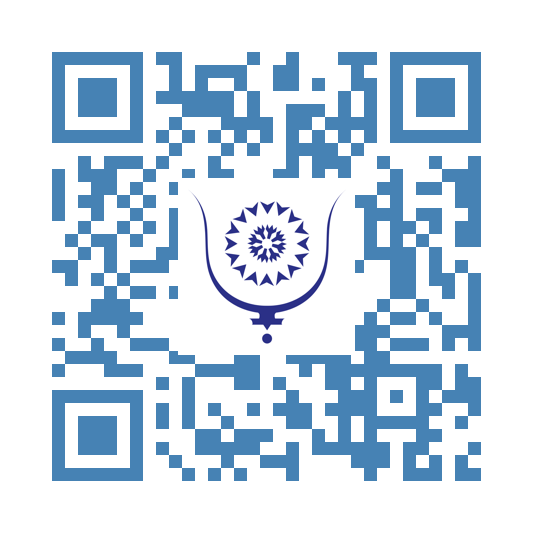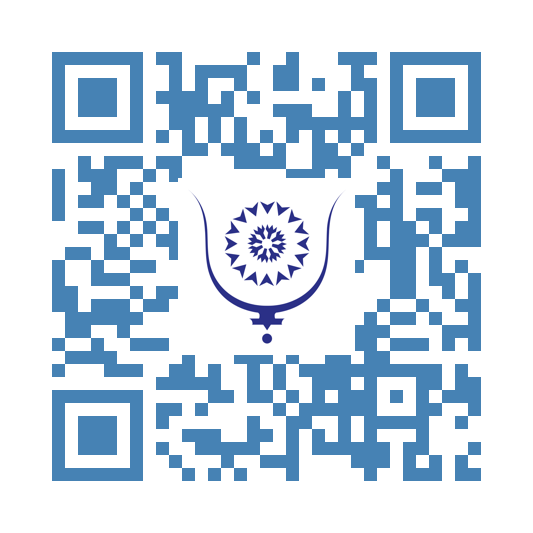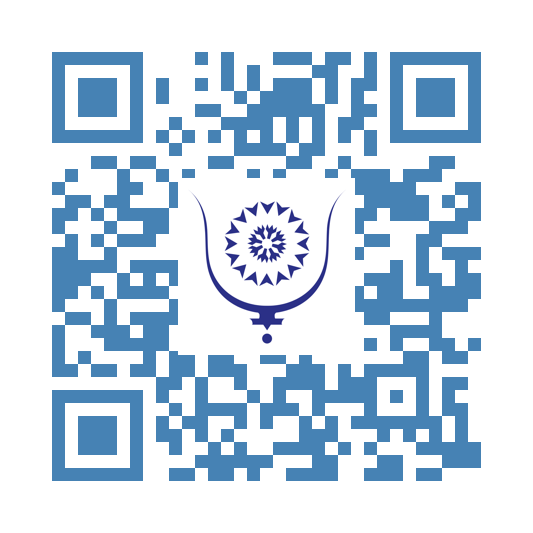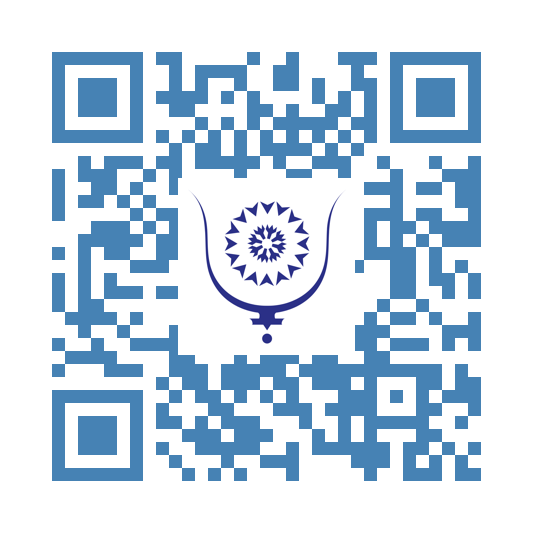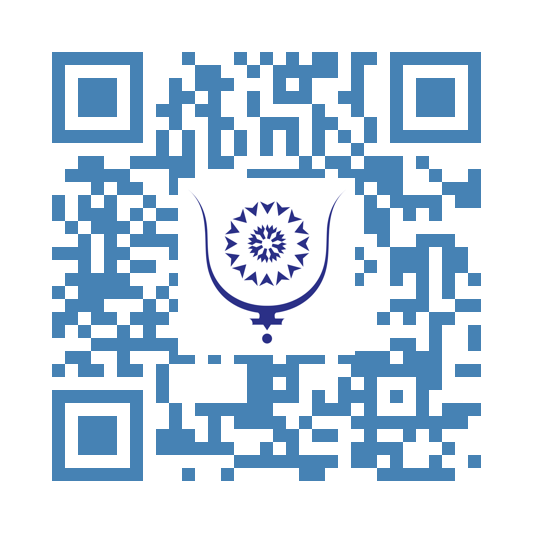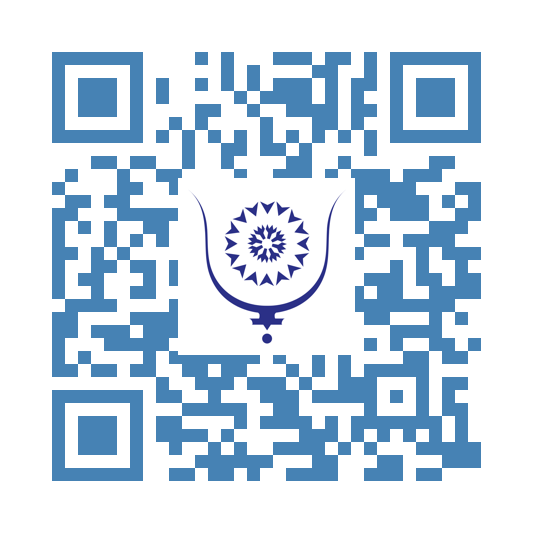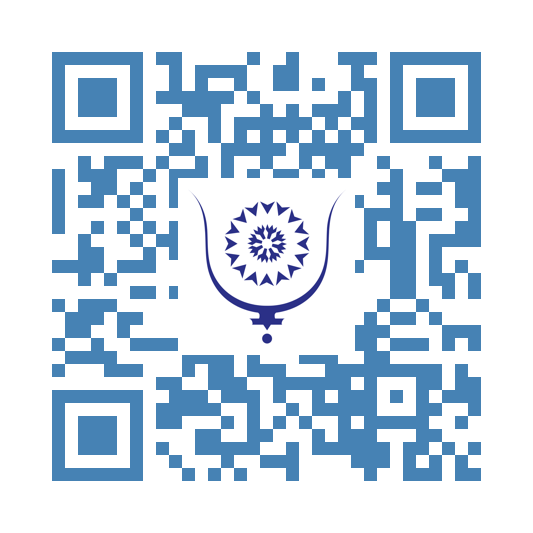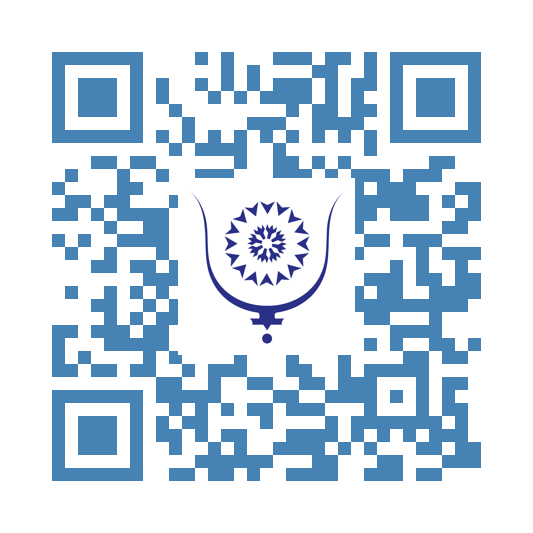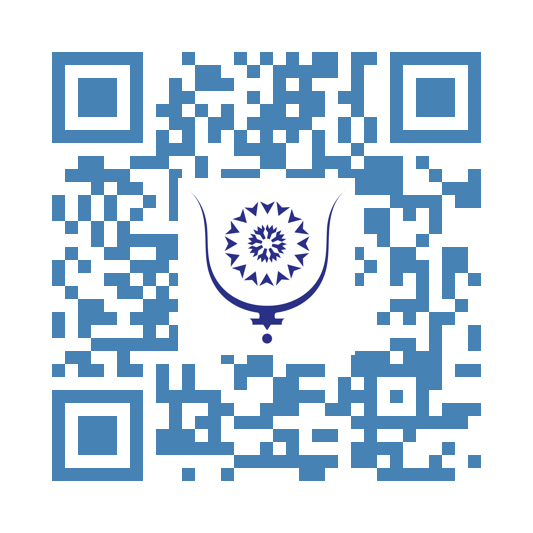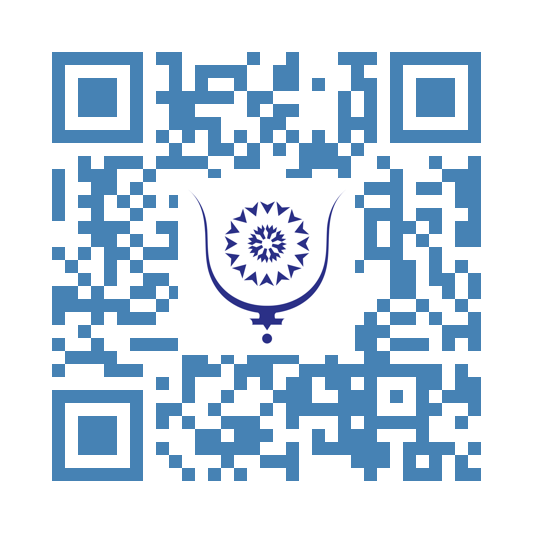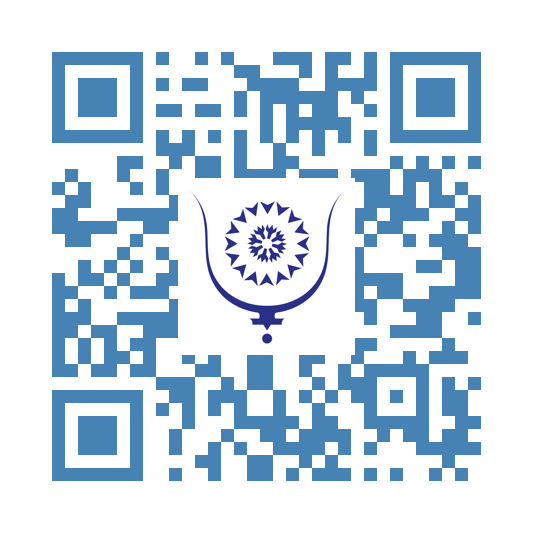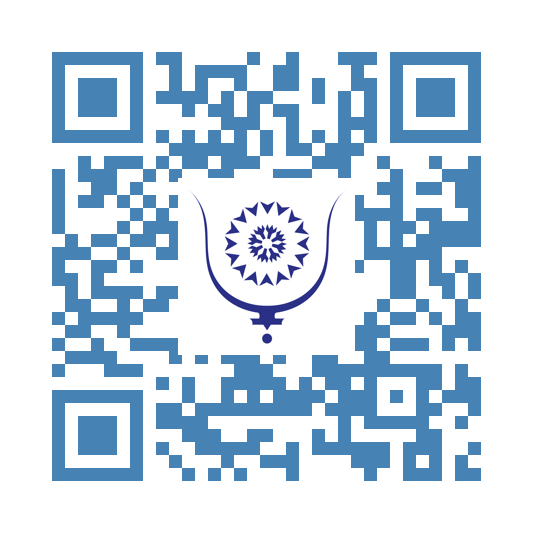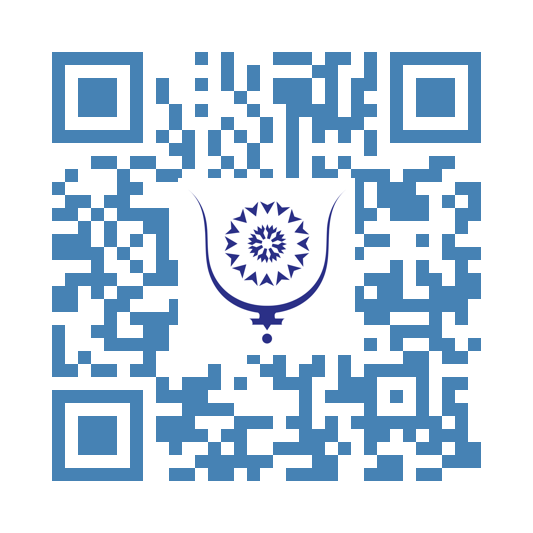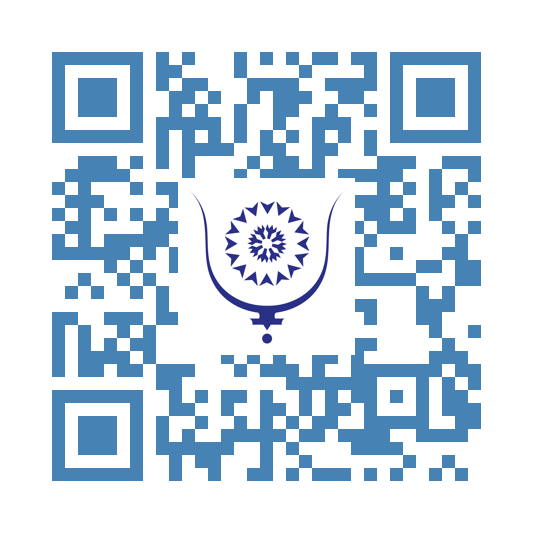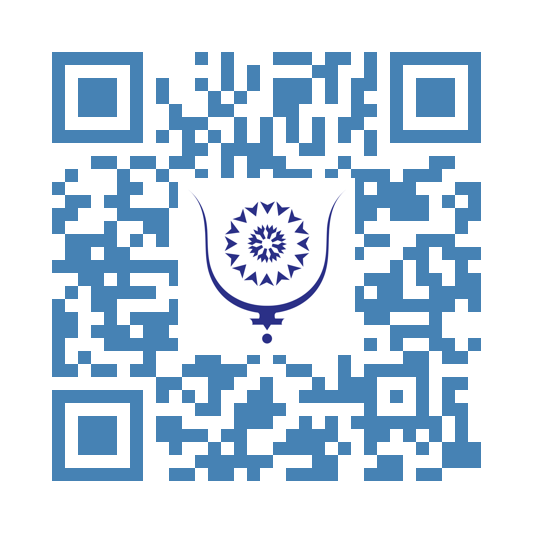Morocco, History, and Geography: The Foundations of Political Reality and Territorial Integrity...
229
Politics cannot be separated from history or geography. It consists of a set of actions and decisions aimed at organizing a society internally, as well as in its relations with the rest of the world. It is always situated within a context shaped by the two fundamental dimensions of history and geography, which are by no means mere backdrops but rather provide the framework within which political projects, conflicts, and developments unfold. Politics may be influenced by an ideology—born of a philosophy—or simply shaped by a given context, but such influence rarely lasts.
History plays a fundamental role in understanding political phenomena. A country’s institutions, laws, and values are rooted in its collective memory, an inheritance made up of major events, breaks, or continuities with the past. Borders, for example, are often drawn following wars or treaties, the outcome of ancient or recent conflicts. They remain visible marks of past rivalries, defeats, victories, and compromises. Relations—whether of solidarity or rivalry—between nations, regions, or communities are explained in light of shared or divergent histories.
The present Kingdom of Morocco cannot be understood without reference to its millennial origins, to the centuries-old Sharifian Empire, nor to the successive dynasties that shaped its relationship to religion, allegiance, and the centralization of power throughout different eras.
Similarly, geography significantly influences the choices and constraints of public policies. The distribution of natural resources conditions economic development, territorial organization, and power relations. Relief, climate, and access to maritime routes determine possibilities for urbanization, agriculture, communication, and defense. Border situations impose specific diplomatic and security policies, while landlocked or insular areas require tailored strategies. Some authors even describe Morocco as an “island country” due to its geographical configuration.
It is therefore inconceivable to conceive of effective or legitimate politics without taking history and geography into account. Every choice, reform, or political ambition must be based on a deep understanding of the territory and collective memory; ignoring one or the other exposes one to illusion, misunderstanding, or even failure.
Regarding the Sahara, referred to as the “Western Sahara,” the geography of this region is undeniably contiguous to Morocco, physically, demographically, and historically: the Saharan populations have largely contributed to the country’s evolution. Its history was written through the successive allegiances of its tribes to the sultans of Morocco, and the Sharifian kingdom thus constitutes a nation-state established long before the contemporary era.
Weakened by having missed the crucial turn of the industrial revolution, the Sharifian Empire was dissected from south to north, but also from the east. The so-called Western Sahara was annexed by Spain, which exercised colonial control there from 1884 to 1975. This situation facilitated France’s domination over territories grouped into French West Africa, part of which later became Mauritania. France also appropriated the eastern part of the Sharifian Empire, annexed de facto to its departments conquered from the Ottoman Empire and called French Algeria. The remainder was placed under French protectorate, while northern Morocco came under Spanish rule.
Independence, achieved in 1956, and the gradual decolonization of Sidi Ifni and Tarfaya concerned other regions only later.
On November 28, 1960, France authorized the proclamation of Mauritania’s independence—a region then claimed by Morocco, as were territories under Spanish control that Morocco considered its own. At that time, there was a Moroccan ministry called the “Ministry of Mauritanian and Saharan Affairs,” headed by Mohammed Fal Ould Oumeir, a representative of those territories.
From 1963 onwards, the kingdom raised the issue of the Spanish Sahara before the Decolonization Commission. The situation became complicated when newly created Mauritania also claimed the territory, notably to pressure Morocco, which did not recognize Mauritanian independence until 1969—nine years after its proclamation. Morocco continued to claim the Spanish Sahara peacefully, preventing the Liberation Army from pursuing military actions in the region.
In 1973, the creation of the Polisario Front (Popular Front for the Liberation of Saguia el-Hamra and Rio de Oro) marked a new stage. This movement initially aimed to unite the Saharan territory with the “motherland.” But in a context of regional rivalries and ideological tensions, the Saharan question was instrumentalized by various actors.
Muammar Gaddafi’s Libya played a decisive role in the rise of the separatist Polisario, supporting and arming the movement in a "revolutionary" and pan-Arabist logic, while seeking to destabilize the Moroccan monarchy. Later, Gaddafi himself admitted having made a “strategic mistake” in backing this group, which remains a destabilizing factor in the region today.
In 1975, a peaceful turning point occurred: bolstered by the International Court of Justice’s opinion recognizing ties of allegiance between Saharan tribes and Moroccan sultans, the late King Hassan II launched the Green March to general surprise. This mobilization pushed Spain to withdraw from Laâyoune in favor of Morocco, which immediately reclaimed the territory. Mauritania, although having occupied adjacent zones, ultimately withdrew, leaving Morocco alone against the Polisario Front, actively supported by Algeria, which hosted, armed, financed, and elevated the movement into a “republic.”
Houari Boumédiène’s Algeria exploited the situation to weaken its Moroccan neighbor, even calling the Saharan issue a “thorn in Morocco’s side,” a way of exacting revenge for the crushing defeat in 1963.
This dispute has often overshadowed the deep history of ties between Morocco and these territories under Sharifian authority well before the colonial era. For Morocco, territorial integrity rests firmly on the constants of history and geography—major arguments. The rest is merely a temporary construction without foundation, destined to fade into oblivion in the near future.
Moroccans know this very well… Perhaps not everyone else…
Share:
Morocco, History, and Geography: The Foundations of Political Reality and Territorial Integrity...
copy:
https://bluwr.com/p/275453220
Histoire et géographie : piliers incontournables de la politique marocaine...
67
La politique ne peut être dissociée de l’histoire ni de la géographie. Elle consiste en un ensemble d’actions et de décisions visant à organiser une société sur le plan interne, mais également dans ses relations avec le reste du monde. Elle s’inscrit toujours dans un contexte façonné par les deux dimensions fondamentales que sont l’histoire et la géographie, qui ne sont nullement de simples arrière-plans, mais offrent bien la trame sur laquelle s’articulent projets, conflits et évolutions politiques. Elle peut être influencée par une idéologie, née d’une philosophie, ou simplement forgée à partir d’un contexte donné mais cela ne dure guère.
L’histoire joue un rôle fondamental dans la compréhension des phénomènes politiques. Institutions, lois et valeurs d’un pays s’ancrent dans sa mémoire collective, héritage constitué d’événements majeurs, de ruptures ou de continuités avec le passé. Ainsi, les frontières, par exemple, sont fréquemment tracées à la suite de guerres ou de traités, résultant de conflits anciens ou récents. Elles restent les marques visibles de rivalités, de défaites, de victoires et de compromis du passé. Les relations, qu’elles soient de solidarité ou de rivalité entre nations, régions ou communautés, s’expliquent à la lumière d’histoires partagées ou divergentes.
Le Royaume du Maroc actuel ne saurait être compris sans référence à sa genèse millénaire, à l’Empire chérifien pluriséculaire ni aux dynasties successives qui ont façonné son rapport aux religions, à l’allégeance ou à la centralisation du pouvoir, selon les époques.
De la même façon, la géographie influence considérablement les choix et contraintes des politiques publiques. La répartition des ressources naturelles conditionne le développement économique, l’organisation territoriale et les rapports de force. Le relief, le climat ou l’accès aux voies maritimes déterminent les possibilités d’urbanisation, d’agriculture, de communication ou de défense. Les situations frontalières imposent des politiques diplomatiques et sécuritaires spécifiques, tandis que les espaces enclavés ou insulaires requièrent des stratégies adaptées. Certains auteurs n’hésitent pas à qualifier le Maroc de “pays insulaire” du fait de sa configuration géographique.
Il est donc inconcevable de penser une politique efficace ou légitime sans tenir compte de l’histoire et de la géographie. Chaque choix, chaque réforme, chaque ambition politique doit s’appuyer sur une compréhension approfondie du territoire et de la mémoire collective ; ignorer l’un ou l’autre, c’est s’exposer à l’illusion, à l’incompréhension, voire à l’échec.
Au sujet du Sahara appelé « occidental », la géographie de cette région se situe indéniablement dans le prolongement du Maroc, tant sur le plan physique, démographique qu’historique : les populations sahariennes ont largement contribué à l’évolution du pays. Son histoire s’est écrite au fil des allégeances successives de ses tribus aux sultans du Maroc, et le royaume chérifien constitue, de fait, un État-nation institué bien avant la période contemporaine.
Affaibli pour avoir raté le virage fondamental de la révolution industrielle, l’Empire chérifien sera dépecé du sud vers le nord, mais aussi à partir de l’est. Le Sahara dit occidental fut annexé par l’Espagne, qui y exerça un contrôle colonial de 1884 à 1975. Cette situation a favorisé la mainmise de la France sur les territoires regroupés dans l’Afrique occidentale française, dont une partie allait former la Mauritanie. La France s’appropria aussi l’est de l’Empire chérifien, annexé de facto à ses départements conquis sur l’Empire ottoman et appelés Algérie française. Le reste sera placé sous protectorat français, tandis que le nord du Maroc passait sous domination espagnole.
L’indépendance obtenue en 1956 et la décolonisation progressive de Sidi Ifni et Tarfaya n’ont concerné d’autres régions que plus tard.
Le 28 novembre 1960, la France autorise la proclamation de l’indépendance de la Mauritanie, région revendiquée alors par le Maroc, tout comme les territoires sous contrôle espagnol, considérés comme siens. À cette époque, il y eu un ministère marocain dénommé « des Affaires mauritaniennes et sahariennes » fut confié à Mohammed Fal Ould Oumeir, représentant de ces territoires.
Dès 1963, le royaume porta la question du Sahara espagnol devant la commission de décolonisation. La situation se compliqua lorsque la Mauritanie nouvellement créée revendiqua également ce territoire, notamment pour exercer une pression sur le Maroc, qui ne reconnaîtra l’indépendance mauritanienne qu’en 1969, soit neuf ans après sa proclamation. Le Maroc continua de revendiquer pacifiquement le Sahara espagnol, empêchant l’Armée de libération de poursuivre ses actions militaires dans la région.
En 1973, la création du Front Polisario (Front populaire de libération de la Saguia el Hamra et du Rio de Oro) marqua une nouvelle étape. Ce mouvement visait initialement à rattacher le territoire saharien à la “mère patrie”. Mais dans un contexte de rivalités régionales et de tensions idéologiques, la question saharienne fut instrumentalisée par divers acteurs.
La Libye de Mouammar Kadhafi joua notamment un rôle décisif dans la montée en puissance du Polisario indépendantiste, soutenant et armant le mouvement dans une logique “révolutionnaire” et panarabiste, tout en cherchant à déstabiliser la monarchie marocaine. Plus tard, Kadhafi admettra lui-même avoir commis une “erreur” stratégique en soutenant ce groupe, qui demeure aujourd’hui encore un facteur de déstabilisation dans la région.
En 1975, un tournant pacifique se produisit : fort de l’avis de la Cour internationale de justice reconnaissant des liens d’allégeance entre les tribus sahariennes et les sultans marocains, feu SM Hassan II lança la Marche verte à la surprise générale. Cette mobilisation poussa l’Espagne à se retirer de Laâyoune au profit du Maroc, qui reprit immédiatement possession du territoire. La Mauritanie, bien qu’ayant occupé des zones limitrophes, finit par se retirer, laissant le Maroc seul face au Front Polisario, soutenu activement par l’Algérie qui hébergea, arma, finança et érigea le mouvement en “république”.
L’Algérie de Houari Boumédiène exploita la situation pour affaiblir son voisin marocain, n’hésitant pas à qualifier le dossier saharien de “caillou dans la chaussure du Maroc”, façon de se venger de la défaite cuisante de 1963.
Ce contentieux a souvent masqué l’histoire profonde des liens entre le Maroc et ces territoires sous autorité chérifienne bien avant l’ère coloniale. Pour le Maroc, l’intégrité territoriale repose solidement sur les constantes que sont l’histoire et la géographie; des arguments majeurs. Le reste n’est qu’une construction éphémère sans fondement, vouée à s’effacer dans l’oubli dans un futur proche.
Les Marocains le savent très bien...Peut être pas les autres...
Share:
Histoire et géographie : piliers incontournables de la politique marocaine...
copy:
https://bluwr.com/p/275432061
Ahmed Faras: The Eternal Legend of Moroccan Football
454
I have been fortunate enough to know Ahmed Faras. It is unbearable for me to speak of him in the past tense, someone who has been part of my life for so long. It had been ages since he last touched a ball. Few are still alive who saw him play, those who, match after match, would await his dribble, his runs down the wing, his shot, his goal.
Faras was an outstanding man, with an incredible shyness and reserve. Even when present somewhere, he was always on the sidelines: discreet, courteous, kind, with deep sensitivity, affection, and great touchiness.
But Faras will always be part of the present. He is a true legend of Moroccan and African football; legends never die.
Fedala saw him born in the cold of December 1947. Mohammedia would be his city and Chabab his eternal club. At the time, there was no such thing as a transfer market, no migrations, no football mercenary spirit. You were born in a club, learned to play there, and you stayed. His temperament was not that of a typical striker: there was no aggressiveness, no cunning. He compensated with his genius and never needed to dive or roll on the ground to sway a referee or create confusion. His genius spared him all that. He was an exceptional striker who marked the history of Moroccan and continental football. The turf at El Bachir football stadium helped him, at that time, it was the best in Morocco.
Ahmed Faras was the product of a generation shaped by the structured environment of the youth sports schools run by the Ministry of Youth and Sports, a system supposedly dismantled by so-called administrative and political reforms. Yet, it was there that Morocco's champions were formed, across all sports. His early path was marked by the guidance of renowned trainers such as Lakhmiri, who helped shape numerous Moroccan talents. This solid foundation allowed him to develop technical skills and a sense of teamwork very early on, which would become hallmarks of his play.
Ahmed Faras spent his entire career at Chabab Mohammedia, from 1965 to 1982, never having a professional contract—such things didn’t exist in Morocco then. There’s no need to mention signing bonuses or performance awards, even with the national team. His loyalty to Chabab is remarkable. He would lead the club to a Moroccan championship and become its top scorer. He would bring along with him his playing friends—Acila, Glaoua, Haddadi, and many more.
Faras was a pillar of the Moroccan national team. With 36 goals in 94 caps, what a historic scorer for the Atlas Lions! He captained the national team for eight years, playing in the 1970 World Cup in Mexico and the 1972 Munich Olympic Games.
In 1975, Ahmed Faras entered the legend by becoming the first Moroccan to win the African Ballon d’Or, an award that underlined the quality and consistency of his play. This distinction placed him among the greatest players on the continent, competing with the top African stars of his era. There was talk of a transfer to Real Madrid...but at the time Moroccan league players were barred from moving abroad under penalty of losing their place in the national team. The idea was, thus, to strengthen the domestic league...
The peak of his career was surely the 1976 Africa Cup of Nations (CAN), won by Morocco in Ethiopia. Faras was the leader on the pitch, the tournament’s top scorer, and his influence was decisive for this historic triumph—the only major African title that Morocco has ever won. He scored crucial goals against Nigeria and Egypt in that tournament, perfectly embodying the role of playmaker and team leader on the field. To this day, he remains the only Moroccan captain ever to lift the coveted African trophy.
I have been a few times to that ground in Addis Ababa where he lifted the trophy, and every time, his image dominates my thoughts. An indelible black-and-white, forever etched in the history of the Kingdom and in the memory of Moroccans who followed the match at the time through the voice of one Ahmed Elgharbi...no live broadcasts back then.
He was a respected and heeded captain, guided by great coaches: Abdelkader Lakhmiri, Blagoe Vidinic, Abdellah Settati, Jabrane, and especially Gheorghe Mardarescu during that epic campaign in the land of Emperor Haile Selassie. His charisma and vision of the game were crucial in unifying the team and leading them to the summit of African football. Faras embodied the spirit of conquest and national pride throughout the tournament. The squad was selected and led by an outstanding manager as well Colonel Mehdi Belmejdoub.
His name is forever bound to that legendary achievement, a symbol of the potential of Moroccan football when guided by exemplary leadership, committed and knowledgeable managers, and players who were true warriors for their jersey’s colors.
Ahmed Faras was not just a talented player. After his retirement, he continued to share his passion, getting involved in youth training, passing on his knowledge and love for the game to the new generation. He has been a source of inspiration for so many generations of players.
Knowing Lhaj Ahmed Faras meant knowing a symbol of loyalty, talent, and unique leadership in Moroccan sports. His name will forever remain inscribed in collective memory as that of a football giant, whose legacy goes beyond sport to inspire entire generations.
Rest in peace, my friend. One day, a great football stadium in this country will bear your name, and it will be fitting, if the players follow your example, honor your career, and if the public rises to your greatness, paying tribute to your distinguished name.
So Lhaj Ahmed Faras, if you ever meet Acila up there, ask him to give you another nice pass, and tell Glaoua to defend well...
Know that your star shines and will always shine above us in the sky of the beautiful country you cherished so much.
---
Share:
Ahmed Faras: The Eternal Legend of Moroccan Football
copy:
https://bluwr.com/p/272896781
Ahmed Faras, légende éternelle du football marocain
109
J’ai eu la chance de connaître Ahmed Faras. Il m’est insupportable d’en parler au passé, lui qui en a fait partie depuis fort longtemps. Cela faisait longtemps qu’il n’avait pas touché un ballon. Peu sont encore vivants, ceux qui l’ont vu jouer, ceux qui, des rencontres durant, attendaient son dribble, son débordement, son tir, son but.
Faras, ce fut un homme hors pair, d’une timidité et d’une retenue invraisemblables. Même présent quelque part, il était toujours à l’écart : discret, courtois, gentil, d’une sensibilité, d’une affectivité et d’une grande susceptibilité.
Mais Faras fera toujours partie du présent. C’est une véritable légende du football marocain et africain ; les légendes ne meurent pas.
Fedala l’a vu naître en plein froid de décembre 1947. Mohammédia sera sa ville et le Chabab son club éternel. À l’époque, point de mercato, point de transhumance, point de mercenariat footballistique. On naissait dans un club, on y apprenait à jouer et on y restait. Son tempérament n’était pas celui d’un attaquant : point d’agressivité, point de ruse. Il compensait par son génie et n’avait point besoin de simulation, de roulades par terre pour amadouer un arbitre et créer la confusion. Son génie lui épargnait tout cela. Il fut un attaquant exceptionnel qui a marqué l’histoire du football national et continental. La pelouse du terrain El Bachir va l’aider. C’était la meilleure du Maroc à cette époque.
Ahmed Faras est le fruit d’une génération formée dans le contexte structurant des écoles de sport du Ministère de la Jeunesse et des Sports. Un concept que les soi-disant réformes administratives et politiques ont tué, et pourtant c’est là que se formaient les champions du Maroc, tous sports confondus. Sa trajectoire débutante est marquée par l’encadrement de formateurs réputés comme Lakhmiri, qui a contribué à façonner de nombreux talents marocains. Ce socle solide lui a permis de développer très tôt des qualités techniques et un sens du collectif qui deviendront la marque de son jeu.
Ahmed Faras a joué toute sa carrière au sein du club Chabab Mohammédia, de 1965 à 1982, sans jamais avoir eu un contrat professionnel. Cela n’existait pas encore au Maroc. Pas besoin de vous parler de ses primes à la signature, ni celles des résultats, même en équipe nationale. Sa fidélité au Chabab est remarquable. Il en fera un club champion du Maroc, et en sera le meilleur buteur. Il entraînera dans son sillage vers les sommets ses copains de jeu, Acila, Glaoua, Haddadi et j’en passe.
Faras fut un pilier de l’équipe du Maroc. Avec 36 buts en 94 sélections, quel buteur historique des Lions de l’Atlas ! Il fut capitaine de l’équipe nationale pendant huit années et participa à la Coupe du Monde 1970 au Mexique ainsi qu’aux Jeux Olympiques de Munich en 1972.
En 1975, Ahmed Faras entra dans la légende en devenant le premier Marocain à recevoir le Ballon d’Or africain, une récompense qui soulignait la qualité et la constance de son jeu. Cette distinction le plaça parmi les plus grands joueurs du continent, en pleine compétition avec des stars africaines de haut niveau. On parla de transfert au Real...mais à l'époque il était interdit à un jeune joueur du championnat marocain de quitte le pays pour jouer à l'étranger sous peine de ne plus être sélectionné en équipe nationale. On pensait ainsi consolider le football national...
Le point d’orgue de sa carrière fut sans doute la Coupe d’Afrique des Nations (CAN) 1976, remportée par le Maroc en Éthiopie. Faras fut le leader sur le terrain, le meilleur buteur du tournoi, et son influence fut déterminante pour ce triomphe historique, le seul titre africain majeur du Maroc à ce jour. Il marqua des buts cruciaux contre le Nigeria et l’Égypte dans cette compétition, incarnant le rôle de meneur d’hommes et de stratège sur le terrain. Il est aujourd’hui encore le seul capitaine marocain à avoir soulevé le trophée africain tant convoité.
J’ai été quelques fois sur ce terrain d’Addis-Abeba où il avait soulevé le trophée, et à chaque fois, son image s’impose à moi. Un noir et blanc indélébile, mais gravé à jamais dans l’histoire du Royaume et dans la mémoire des Marocains de l’époque qui avait suivi le match par la voix d'un certain Ahmed Elgharbi...point de direct à l'époque.
Il fut un capitaine respecté et écouté, avec de grands entraîneurs, Abdelkader Lakhmiri, Blagoe Vidinic, Abdellah Settati, Jabrane et notamment Gheorghe Mardarescu durant cette épopée dans le pays de l'Empereur Haile Selassié . Son charisme et sa vision du jeu furent primordiaux pour fédérer l’équipe et la conduire au sommet du continent africain. Faras incarna l’esprit de conquête et la fierté nationale tout au long de la compétition. L’équipe était sélectionnée et conduite par un dirigeant hors pair également, le Colonel Mehdi Belmejdoub.
Son nom reste attaché à cette conquête légendaire, symbole du potentiel du football marocain lorsqu’il est mené par un leadership exemplaire, des dirigeants connaisseurs et dévoués, et des joueurs véritables combattants pour les couleurs d’un maillot.
Ahmed Faras n’était pas seulement un joueur de talent. Après sa retraite, il a continué à transmettre sa passion en s’impliquant dans la formation des jeunes, partageant son savoir et son amour du football avec la nouvelle génération. Il a été une source d’inspiration pour tant de générations de joueurs.
Côtoyer Lhaj Ahmed Faras, c’est côtoyer un symbole de loyauté, de talent et de leadership unique dans le paysage sportif marocain. Son nom reste gravé dans la mémoire collective comme celui d’un géant du football, dont l’héritage dépasse les frontières du sport pour inspirer des générations entières.
Repose en paix mon ami. Un jour, un grand stade de football du pays portera ton nom, et il le portera bien si les joueurs observaient ton exemple, en suivant ta trajectoire, en respectant ta carrière et si le public se montre à la hauteur, en déférence à ton grand nom.
Si Lhaj Ahmed Fars, si jamais tu rencontres Acila là-haut, dis-lui de te faire encore une petite passe, et dis à Glaoua de bien défendre...
Saches que ton étoile brille et brillera toujours au dessus de no tête dans le ciel du beau pays que tu as tant chéri.
Share:
Ahmed Faras, légende éternelle du football marocain
copy:
https://bluwr.com/p/272861800
New Era in World Athletics: The CAA’s Vision for Equitable International Representation...
777
At its most recent congress held on July 14, 2025, in Abeokuta, Nigeria, the Confederation of African Athletics (CAA) adopted a resolution that could upend the organization of global athletics governance. As the debate on modernity and representation within international sports institutions intensifies, the CAA is proposing major reforms for World Athletics (WA).
**At the Heart of the Reform: A Call for Fairer Governance**
Confronted with recent developments in world sports and the need to ensure transparency and efficiency, the CAA believes it is time to revise the Statutes of World Athletics, the global governing body for athletics. The main goal is to strengthen continental representation within the WA Council.
This reform hinges on the key points of the resolution, namely fair representation by continent. The CAA suggests establishing a fixed quota of representatives for each continent within the Council. Such a measure would give each region an effective voice, limiting the overrepresentation of continents already well established in international decision-making bodies. It also proposes that the election of World Athletics Council members should be conducted by the continental associations, rather than by a global general assembly. The CAA insists that each continental association should directly elect its own representatives. However, under the CAA’s proposed reform, the presidency is an exception: the position of President of World Athletics would remain subject to the traditional election by the WA General Assembly, thus preserving a form of institutional unity.
The proposal goes further by suggesting that, for all World Athletics commissions and working groups, the nomination of members should also fall under the authority of the continental associations, according to a pre-established quota set by WA regulations. This approach aims to ensure real diversity within the technical and strategic circles of global athletics.
**A New Momentum Towards International Sports Democracy**
The CAA’s initiative is part of a global movement calling for more democracy, transparency, and balance in the governance of major sports federations. Several observers believe that such a reform, if supported by other continental associations, could become a model for other sports and help create a more balanced, representative, and inclusive international sports world.
Nonetheless, the proposal will face multiple challenges in its implementation. Despite its ambitions, this resolution will have to overcome several obstacles. Naturally, it requires building consensus among other continental associations. There will also be negotiations with the World Athletics Council, which may fear a loss of influence for certain continents. Finally, regulatory texts will need to be adopted according to a timeline compatible with the desired institutional evolution.
Inspired by the spirit of Abeokuta, the CAA’s proposal could well usher in a new era for athletics. It reaffirms the legitimacy of emerging continents and raises the fundamental question of equity in international sports. Only time will tell whether this ambitious reform will find global resonance and lead to a profound transformation of World Athletics governance.
Share:
New Era in World Athletics: The CAA’s Vision for Equitable International Representation...
copy:
https://bluwr.com/p/264625748
Vers une nouvelle ère : la CAA défend l’équité et la représentativité dans World Athletics
173
Lors de son dernier congrès tenu le 14 juillet 2025 à Abeokuta, au Nigeria, la Confédération Africaine d'Athlétisme (CAA) a adopté une résolution qui pourrait bouleverser l'organisation de la gouvernance mondiale de l’athlétisme. À l’heure où le débat sur la modernité et la représentativité dans les institutions sportives internationales s’intensifie, la CAA propose des réformes majeures pour l’organisation World Athletics (WA).
Au cœur de la réforme : pour une gouvernance plus équitable. Face aux récents développements du sport mondial et à la nécessité de garantir transparence et efficacité, la CAA estime qu’il est temps de réviser les Statuts de World Athletics, l’instance dirigeante de l’athlétisme mondial. L’objectif principal étant de renforcer la représentativité continentale au sein du Conseil de WA.
Cette réforme passe obligatoirement par les Points clés de la résolution à savoir une représentativité équitable par continent. La CAA suggère l’instauration d’un quota fixe de représentants pour chaque continent au sein du Conseil. Une telle mesure offrirait à chaque région une voix effective, limitant la surreprésentation des continents déjà bien installés dans les organes décisionnels internationaux. Elle propose également que l’élection des membres du conseil de World Athletics se fasse par les associations continentales, plutôt que de faire élire les membres du Conseil en assemblée générale mondiale. Pour la CAA il faut que chaque association continentale élise directement ses propres représentants. Dans la réforme proposée donc par la CAA l’exception pour la présidence. Le poste de Président de World Athletics resterait soumis à l’élection traditionnelle par l’Assemblée Générale de WA, préservant ainsi une forme d’unité institutionnelle.
Le texte va plus loin en proposant que, pour toutes les commissions et groupes de travail de World Athletics, la désignation des membres puisse relèver également de la compétence des associations continentales, selon un quota fixé à l’avance par les règlements de WA. Cette orientation vise à garantir une diversité réelle dans les cercles techniques et stratégiques de l’athlétisme mondial.
Il s’agit là d’un nouvel élan pour la démocratie sportive internationale. La démarche de la CAA s’inscrit dans un mouvement mondial réclamant davantage de démocratie, de transparence et d’équilibre dans la gouvernance des grandes fédérations sportives. Plusieurs observateurs estiment qu’une telle réforme, si elle était soutenue par les autres associations continentales, pourrait servir de modèle pour d'autres sports et contribuer à un monde sportif international équilibré, représentatif et inclusif.
Cependant la proposition fera face à de multiples défis pour sa mise en œuvre. Malgré ses ambitions, cette résolution devra franchir plusieurs obstacles. Bien évidemment il s’agit d’obtenir un consensus auprès des autres associations continentales. Il faudra aussi négocier avec le Conseil de World Athletics, susceptible de redouter une perte d’influence pour certains continents. Il s’agit ensuite d’adopter les textes réglementaires dans un calendrier compatible avec l’évolution institutionnelle souhaitée.
Portée par l’esprit d’Abeokuta, la proposition de la CAA pourrait bien inaugurer une nouvelle ère pour l’athlétisme. Elle réaffirme la légitimité des continents émergents et pose la question fondamentale de l’équité dans le sport international. L’avenir dira si cette ambition de réforme trouvera un écho mondial et débouchera sur une transformation en profondeur de la gouvernance de World Athletics.
Share:
Vers une nouvelle ère : la CAA défend l’équité et la représentativité dans World Athletics
copy:
https://bluwr.com/p/264623580
Morocco-Nigeria: From Coldness to a Continental Strategic Partnership...
927
I am currently in Abeokuta, Nigeria, for the organization of the African Athletics Championships for U18 and U20. It is only natural to reflect on the relations between Morocco and Nigeria, which have seen a remarkable evolution, moving from a period of distance and caution to a major strategic partnership for Africa. An eloquent indicator: the national airline now operates two daily flights to Lagos.
From the 1960s to the 1980s, relations between Morocco and Nigeria remained formal but distant, due to deep ideological differences. Nigeria, an Anglophone heavyweight and close to the Non-Aligned Movement—a non-alignment that in reality meant alignment with the Eastern European models of the time. Morocco, on the other hand, closer to the West, adopted a cautious diplomacy in line with its longstanding position and its principles of non-interference and respect for peoples and their choices. The distancing between the two countries became more pronounced, especially after the Kingdom’s withdrawal from the Organization of African Unity (OAU) in 1984, in reaction to the admission of the so-called Sahrawi Arab Democratic Republic (SADR) to this organization. The issue of the so-called Western Sahara was a major point of friction, with Nigeria supporting the SADR, which hindered any significant rapprochement. Thus, relations during the 1980s and 1990s remained lukewarm, limited to basic diplomatic exchanges.
The return of democracy to Nigeria in 1999, with the election of Olusegun Obasanjo, and Morocco’s growing influence on the African stage marked a turning point. The two countries began a discreet but concrete diplomatic rapprochement. Several areas were explored to strengthen cooperation: energy, with discussions on gas cooperation; trade, with modest but growing exchanges; agriculture, aiming to meet the growing needs of the Nigerian population; and the religious dimension, notably through Sufism and the moderate religious education promoted by Morocco.
The real turning point came in December 2016, during the historic visit of King Mohammed VI to Abuja. This visit marked a break in bilateral relations, with the signing of numerous cooperation agreements in the agricultural, banking, industrial, religious, and energy sectors. One recalls here the fraternal embraces and warm words that marked the meetings between His Majesty King Mohammed VI and President Buhari.
The flagship project in this dynamic is the Nigeria-Morocco Gas Pipeline (NMGP), announced in 2016. This ambitious project, over 5,600 km long and crossing 13 West African countries, aims to transport Nigerian gas to Morocco, and potentially to Europe. Its objectives are multiple: to ensure energy security, promote regional integration, and strengthen geopolitical stability. Between 2022 and 2023, several financing and technical study agreements were signed with ECOWAS, OPEC, and European partners.
At the same time, cooperation has diversified: Moroccan banks have invested in Nigeria, while the partnership between the OCP (Office Chérifien des Phosphates) and the Dangote Group has strengthened fertilizer production in Nigeria.
On the religious front, Morocco welcomes Nigerian imams to its training centers, thus consolidating cultural and religious ties.
Since the election of President Bola Tinubu in 2023, active cooperation with Morocco seems to be continuing. The NMGP pipeline project is progressing with the support of key players such as the European Union and the Islamic Development Bank, despite a complicated global context marked by the war in Ukraine and regional instability.
The issue of Western Sahara remains a moderate dividing line: Nigeria has not withdrawn its recognition of the SADR, but has not made any hostile statements towards Rabat for several years, indicating a certain diplomatic appeasement.
The Morocco-Nigeria partnership is part of a complex geostrategic dynamic, notably in competition and complementarity with Algeria. The Morocco-Nigeria project is sometimes seen as a counterweight to the Trans-Saharan Algeria-Nigeria pipeline, which remains at the project stage, unlike the Moroccan project, which is advancing rapidly and according to the set schedule.
At the regional level, this alliance could reshape North-South axes of African cooperation, linking West Africa to the Maghreb, thus moving beyond the traditional Francophone/Anglophone divide. Morocco’s application to join ECOWAS, although currently suspended, illustrates this desire for deeper economic integration with Abuja as a key partner.
Relations between Morocco and Nigeria have evolved from diplomatic coldness to a structuring strategic alliance for the African continent. The gas pipeline project, banking establishment, agricultural and religious cooperation, as well as geoeconomic convergences, make this partnership a major pillar of Africa’s Global South. The next decade will be decisive in measuring the ability of these two countries to transform their cooperation into a driver of continental integration.
This clear overview and chronology of the evolution of Morocco-Nigeria bilateral relations highlights the political, economic, and geostrategic stakes underlying them.
Can we conclude without paying heartfelt tribute and praying for the soul of President Muhammadu Buhari, who passed away on Sunday, July 13, in London at the age of 82 after a long illness? It was during his presidency that relations between the two countries developed and moved from a latent conflictual routine to a win-win cooperation. May he rest in peace.
Share:
Morocco-Nigeria: From Coldness to a Continental Strategic Partnership...
copy:
https://bluwr.com/p/261929503
Maroc-Nigeria : De la froideur à un partenariat stratégique continental...
226
Je me trouve à Abeokuta au Nigéria pour l’organisation des Championnats d’Afrique d’Athlétisme des U18 et des U20. Quoi de plus normal que de penser aux relations entre le Maroc et le Nigeria qui ont connu une évolution notable passant d’une période de distance et de prudence à un partenariat stratégique majeur pour l’Afrique. Un indice éloquent: la compagnie aérienne nationale assure aujourd’hui deux vols quotidiens sur Lagos.
Dans les années 1960 à 1980, les relations entre le Maroc et le Nigeria sont restées formelles mais distantes, en raison de divergences idéologiques profondes. Le Nigeria, poids lourd anglophone et proche du bloc non-aligné ; un non alignement qui signifiait plutôt un alignement sur les modèles de l'Europe de l’Est de l'époque. Le Maroc, quant à lui, plus proche de l’Occident, adoptait une diplomatie prudente en respect de son positionnement séculaire et de ses fondamentaux de non ingérence et de respect des peuples et de leurs choix. La distanciation entre les deux pays a été plus actée notamment après le retrait du Royaume de l’Organisation de l’Unité Africaine (OUA) en 1984, en réaction à l’adhésion de la République fantoche arabe sahraouie démocratique à cette organisation. La question du Sahara dit occidental constituait un point de friction majeur, le Nigeria soutenant la RASD, ce qui freinait tout rapprochement significatif. Ainsi, les relations durant la décennie 1980–1990 sont restées tièdes, limitées à des échanges diplomatiques de base.
Le retour de la démocratie au Nigeria en 1999, avec l’élection d’Olusegun Obasanjo, et la montée en puissance du Maroc sur la scène africaine ont marqué un tournant. Les deux pays ont entamé un rapprochement diplomatique discret mais concret. Plusieurs domaines ont été explorés pour renforcer la coopération : l’énergie avec des discussions sur une coopération gazière, le commerce avec des échanges modestes mais en croissance, l'agriculture dans l'objectif de satisfaire aux besoins croissants de la population nigériane, ainsi que la dimension religieuse, notamment à travers le soufisme et l’enseignement religieux modéré promu par le Maroc.
Le véritable tournant s’est produit en décembre 2016, lors de la visite historique du roi Mohammed VI à Abuja. Cette visite a marqué une rupture dans les relations bilatérales, avec la signature de nombreux accords de coopération dans les secteurs agricole, bancaire, industriel, religieux et énergétique. L'on rappellera ici les accolades fraternelles et les propos chaleureux ayant marqués les rencontres de Sa Majesté le Roi Mohammed VI avec le Président Buhari.
Le projet phare dans cette dynamique est le gazoduc Nigeria-Maroc (NMGP), annoncé en 2016. Ce projet ambitieux, long de plus de 5600 km et traversant 13 pays d’Afrique de l’Ouest, vise à acheminer le gaz nigérian jusqu’au Maroc, puis potentiellement vers l’Europe. Ses objectifs sont multiples : assurer la sécurité énergétique, favoriser l’intégration régionale et renforcer la stabilité géopolitique. Entre 2022 et 2023, plusieurs accords de financement et d’études techniques ont été signés avec la CEDEAO, l’OPEP et des partenaires européens.
Parallèlement, la coopération s’est diversifiée : des banques marocaines ont investi au Nigeria, tandis que le partenariat entre l’Office chérifien des phosphates (OCP) et le Dangote Group a renforcé la production d’engrais au Nigeria.
Sur le plan religieux, le Maroc accueille des imams nigérians dans ses centres de formation, consolidant ainsi les liens culturels et religieux.
Depuis l’élection du président Bola Tinubu en 2023, la coopération active avec le Maroc semble se poursuivre. Le projet du gazoduc NMGP avance avec le soutien d’acteurs importants tels que l’Union européenne et la Banque Islamique de Développement, malgré un contexte mondial compliqué marqué par la guerre en Ukraine et des instabilités régionales.
La question du Sahara occidental demeure une ligne de fracture modérée : le Nigeria n’a pas retiré sa reconnaissance de la RASD, mais n’émet plus de déclarations hostiles envers Rabat depuis plusieurs années, témoignant d’un apaisement diplomatique certain.
Le partenariat Maroc-Nigeria s’inscrit dans une dynamique géostratégique complexe, notamment en compétition et complémentarité avec l’Algérie. Le projet Maroc-Nigeria est parfois perçu comme un contrepoids au gazoduc transsaharien Algérie-Nigeria, qui reste à l’état de projet contrairement au projet marocain qui avance à grande vitesse et selon le timing arrêté.
Sur le plan régional, cette alliance pourrait redessiner les axes Nord-Sud de coopération africaine, reliant l’Afrique de l’Ouest au Maghreb, et dépasser ainsi la traditionnelle division francophone/anglophone. L’adhésion du Maroc à la CEDEAO, bien que suspendue, illustre cette volonté d’intégration économique poussée avec Abuja comme partenaire-clé.
Les relations entre le Maroc et le Nigeria ont évolué d’une froideur diplomatique à une alliance stratégique structurante pour le continent africain. Le projet de gazoduc, l’implantation bancaire, la coopération agricole et religieuse, ainsi que les convergences géoéconomiques font de ce partenariat un pilier majeur du Sud global africain. La prochaine décennie sera déterminante pour mesurer la capacité de ces deux pays à transformer leur coopération en un moteur d’intégration continentale.
Le panorama clair et la chronologique de l’évolution des relations bilatérales Maroc-Nigeria, souligne les enjeux politiques, économiques et géostratégiques qui les sous-tendent.
Peut on conclure sans rendre un hommage appuyé et prier pour l’âme du Président Muhammadu Buhari décédé le dimanche 13 juillet à Londres à l'âge de 82 ans des suites d'une longue maladie. C’est durant sa présidence que les relations entre les deux pays se sont développées et sont sorties de la routine conflictuelle larvée vers une coopération Win Win. Paix à son âme.
Share:
Maroc-Nigeria : De la froideur à un partenariat stratégique continental...
copy:
https://bluwr.com/p/261286320
Kingdom of Morocco: 2030 Foundation, the New Momentum for Major Sporting Events
1040
The Moroccan Government Council recently formalized the creation of the **2030 Foundation**, an innovative strategic entity tasked with leading the preparation, organization, and successful hosting of major international sporting events that the Kingdom will welcome in the coming years. This initiative aligns with an ambitious vision driven by royal directives and the instructions given at the Council of Ministers on December 4, 2024, aiming to establish Morocco as a global benchmark for hosting major sporting events.
The **2030 Foundation** is not merely an organizing committee; it is designed as a true lever for economic, social, and infrastructural transformation. Its mission encompasses the comprehensive management of flagship events such as the **2025 Africa Cup of Nations**, which will serve as a full-scale rehearsal, and the **2030 FIFA World Cup**, co-hosted with Spain and Portugal.
Through this new entity, Morocco intends not only to guarantee the technical and logistical success of these competitions but also to maximize their positive impact across the entire national territory. To achieve this, the Foundation’s mission rests on **six strategic pillars**:
1. **Optimal planning and coordination:** The Foundation will ensure rigorous and detailed planning covering all phases from preparation to event closure. It will effectively mobilize public and private stakeholders to respect timelines and international standards, with global logistical management—including delegation reception, security, communication, and media—at its core.
2. **Acceleration of infrastructure projects:** Hosting these sporting events is a powerful driver for infrastructure development. The Foundation will oversee the completion and modernization of stadiums, training centers, and related facilities according to FIFA and CAF requirements. It will also lead the development of airports, the expansion of the high-speed rail network, and improvement of roadways to facilitate mobility for spectators and teams. Renovation and construction of hotels, as well as enhancement of tourism services and urban infrastructure in host cities, are integral to this large-scale effort.
3. **Transparent, rigorous project management:** The Foundation commits to exemplary management with strict monitoring of budgets, deadlines, and specifications. It will implement control and evaluation tools to guarantee the effectiveness of actions undertaken, ensuring Morocco fully honors its international commitments and strengthens its global credibility and image.
4. **Administrative coordination and international dialogue:** Acting as the sole interlocutor with international bodies such as FIFA and CAF, the Foundation will centralize decisions and harmonize Morocco’s positions. This centralization will facilitate exchanges, accelerate negotiations, and swiftly resolve potential issues, ensuring essential administrative and diplomatic fluidity for event success.
5. **Promotion of a positive and sustainable image of Morocco:** Beyond technical aspects, the Foundation will play a key role in long-term strategic planning, integrating economic, social, and environmental benefits. It will highlight Morocco’s cultural, tourist, and economic assets and deploy proactive communication to attract investors, media, and visitors, thereby enhancing the Kingdom’s international appeal.
6. **Enhanced support for host regions and provinces:** Aware of the importance of balanced territorial development, the Foundation will provide technical and financial support to organizing regions and provinces. It will ensure local human resource training and mobilization while developing public and private services (transport, security, health, accommodation) to offer an optimal visitor experience. This approach guarantees that event benefits extend throughout Morocco, helping reduce regional disparities.
The **2030 Foundation** embodies a dynamic of sustainable and inclusive development, aiming to create jobs, stimulate the local economy, strengthen modern infrastructure, and improve social cohesion and Morocco’s cultural influence. These sporting events become catalysts to accelerate the Kingdom’s economic and social transformation.
Underlying this vision is the goal to depoliticize the action to ensure guaranteed success. The Foundation transcends time, competition, and political calculation. One major challenge is to shield these mega sports projects from political uncertainties and administrative delays. By ensuring centralized, rigorous, and multidisciplinary management, it guarantees optimal project efficiency and safeguards against bureaucratic stagnation.
The **2030 Foundation** is thus the cornerstone of an ambitious national strategy that promises not only the exemplary success of CAN 2025 and the 2030 FIFA World Cup but also the emergence of a new dynamic of harmonious and sustainable development for Morocco.
This innovation reflects the Kingdom’s determination to combine sporting excellence with socio-economic progress. It embodies a modern, proactive vision capable of transforming international sporting events into genuine levers of long-term growth and influence. Morocco will position itself as a key player on the global sports stage, ready to meet tomorrow’s challenges with ambition and responsibility.
Share:
Kingdom of Morocco: 2030 Foundation, the New Momentum for Major Sporting Events
copy:
https://bluwr.com/p/261037000
Morocco, an Indispensable Pivot of the New American Strategy in Africa and the Atlantic...
1104
In a mini-summit, the first of its kind, President Trump hosted five West African heads of state, marking a new geopolitical dynamic in the region. The USA is now adopting a pragmatic and transactional approach focused on economic partnerships, security, and the development of strategic resources. Underlying this is, of course, the aim to counter the growing influence of China and Russia in the region.
This new orientation is reflected in the targeted selection of African partners. Washington favors countries perceived as open to investment and rich in critical resources, possibly at the expense of some regional heavyweights like Nigeria. The emphasis is on trade and investment agreements replacing the traditional official development aid, which has been abandoned in favor of bilateral deals centered on commerce, access to strategic minerals such as manganese, uranium, oil, cobalt, and securing supply chains.
One of the pillars of this new approach is strengthening security, which the region greatly needs. Discussions focused on combating terrorism, regulating migration flows, and military cooperation, with the intention to rely on trustworthy partners to project American power.
Let us set aside the behavior of the participants and the awkwardness that chilled the atmosphere. Ultimately, everyone was simply in their place according to their true standing.
One by one, before the president, each head of state introduced themselves in a kind of “name, first name, profession.” It is unfortunate that Mauritania, Gabon, Guinea-Bissau, Liberia, and Senegal separately expressed their economic, security, and political priorities.
- Brice Clotaire Oligui Nguema, the strongman of Gabon, emphasized the need for increased support for local processing of mineral resources, mentioning his decision to ban the export of raw manganese by 2029 to promote value addition locally, following the Botswana model. He expressed openness to industrial partnerships to develop refining and local production capacities.
- Umaro Sissoco Embaló of Guinea-Bissau highlighted the strategic importance of his country’s port and its rich bauxite deposits, requesting support to modernize port and logistics infrastructure, a key condition for attracting investment and regional economic integration.
- Joseph Boakai of Liberia, speaking in perfect English according to Trump, called for a more favorable framework for American investments, especially regarding legal security and anti-corruption efforts. He also requested enhanced cooperation in combating drug trafficking and regulating migration flows, key factors for regional stability.
- Mohamed Ould Ghazouani, president of Mauritania, seeks to develop manganese and uranium resources, calling for agreements to build local industrial sectors. He also proposed strengthened partnership in maritime security to fight piracy and illicit trafficking in the Atlantic.
- Bassirou Diomaye Faye of Senegal raised the issue of his country’s hidden debt and sought support from international financial institutions like the IMF, as well as enhanced economic and trade cooperation, particularly in renewable energy and information technology sectors.
All want to establish sustainable partnerships with the USA focused on local resource processing, infrastructure modernization, security, and economic governance. Were they warning that without American investments, other powers would take their place?
Although Morocco was not invited to this mini-summit, it occupies a central place in the new African and Atlantic geopolitical architecture thanks to several levers, notably the modernization of the Morocco–United States free trade agreement. Rabat seeks to expand this agreement to include emerging sectors such as artificial intelligence, defense industry, clean energy, and green hydrogen, beyond traditional textile and agricultural exports. The United States, wishing to secure certain supplies to reduce dependence on China, finds Morocco a good partner in strategic minerals with its phosphate and cobalt reserves, essential resources for the global energy transition. Morocco is also a major security partner. It hosts the African Lion exercises and is modernizing its armed forces with advanced American equipment, including HIMARS, drones, and missiles. It is also negotiating the acquisition of F-35 fighter jets.
In energy, Morocco aims to become a key supplier of green hydrogen for Europe and the United States, with projects integrating into future transatlantic energy supply chains.
In the context of the new American policy, Morocco can hope to better benefit from the situation, primarily through reaffirmed American support for Morocco’s sovereignty over the Southern provinces, which strengthens its position. The Polisario is thus more isolated and Algeria disoriented.
The Kingdom has also established itself as a regional hub thanks to its Atlantic anchorage, infrastructure, projects such as the port of Dakhla, the Nigeria-Morocco gas pipeline, and its political stability. It presents itself as the ideal gateway for American and European companies seeking access to the African market. This is a major asset for increased investment attractiveness. The geopolitical rivalry favors an influx of capital and structuring projects, especially in renewable energy, technology, and defense industries.
Add to this Morocco’s African diplomatic leadership.
Building on its diplomatic and economic successes, Morocco consolidates its role as mediator and leader in South-South cooperation and regional integration initiatives. It is the perfect pivot state for the region. The next step is for Mauritania to join the USA and the other four countries and clearly express its position on the Sahara issue.
The current geopolitical reshuffle offers unprecedented room to strengthen strategic partnerships, develop resources, ensure security, and promote the prosperity of peoples. However, these opportunities require agile diplomacy and the ability to anticipate rapid changes in alliances and international priorities. Have the Five seized this chance? They all maintain good relations with the Kingdom.
Share:
Morocco, an Indispensable Pivot of the New American Strategy in Africa and the Atlantic...
copy:
https://bluwr.com/p/260640254
Royaume du Maroc : Fondation 2030, le Nouvel Élan des Grands Événements Sportifs
246
Le Conseil du Gouvernement marocain a récemment officialisé la création de la **Fondation 2030**, une structure stratégique innovante, destinée à piloter la préparation, l’organisation et la réussite des grands événements sportifs internationaux que le Royaume accueillera dans les prochaines années. Cette initiative s’inscrit dans une vision ambitieuse, portée par les orientations royales et les instructions au Conseil des Ministres du 4 décembre 2024, visant à faire du Maroc une référence mondiale en matière d’accueil d’événements sportifs majeurs.
La Fondation 2030 ne se limite pas à un simple comité d’organisation. Elle est conçue comme un véritable levier de transformation économique, sociale et infrastructurelle. Sa mission englobe la gestion globale des événements phares que sont la **Coupe d’Afrique des Nations 2025 **, qui servira de répétition grandeur nature, et la **Coupe du Monde FIFA 2030**, coorganisée avec l’Espagne et le Portugal.
À travers cette nouvelle entité, le Maroc entend non seulement garantir la réussite technique et logistique de ces compétitions, mais aussi maximiser leurs retombées positives sur l’ensemble du territoire national. Pour cela la mission de la Fondation 2030 va s'adosser à Six piliers stratégiques.
En premier lieu il s'agit de planification et de coordination optimales. Pour cela la Fondation 2030 assurera une planification rigoureuse et détaillée, couvrant toutes les phases, depuis la préparation jusqu’à la clôture des événements. Elle est appelée à mobiliser efficacement les acteurs publics et privés, garantissant ainsi le respect des calendriers et des standards internationaux. La gestion logistique globale, incluant l’accueil des délégations, la sécurité, la communication et la médiatisation, est au cœur de ses priorités.
En second lieu la nouvelle instance est chargé de l'accélération des projets d’infrastructures. L’organisation de ces événements sportifs est un puissant moteur pour le développement des infrastructures. La Fondation supervisera la finalisation et la modernisation des stades, centres d’entraînement et équipements annexes, conformément aux exigences de la FIFA et de la CAF. Par ailleurs, elle pilotera le développement des aéroports, l’extension du réseau ferroviaire à grande vitesse, ainsi que l’amélioration des axes routiers pour faciliter la mobilité des spectateurs et des équipes. La rénovation et la construction d’hôtels, ainsi que l’amélioration des services touristiques et des infrastructures urbaines dans les villes hôtes, font également partie intégrante de ce chantier d’envergure.
La Fondation 2030, en troisième lieu s’engage à faire sienne une gestion transparente, rigoureuse et exemplaire des projets, avec un suivi strict des budgets, des délais et des cahiers des charges. Elle mettra en place des outils de contrôle et d’évaluation réguliers pour garantir l’efficacité des actions entreprises. Cette rigueur vise à assurer que le Maroc respecte pleinement ses engagements internationaux, renforçant ainsi sa crédibilité et son image à l’échelle mondiale.
La Fondation 2030, en quatrième lieu devra assurer la coordination administrative et le dialogue international, agissant comme interlocuteur unique auprès des instances internationales telles que la FIFA et la CAF. La Fondation centralisera les décisions et harmonise les positions du Royaume. Cette centralisation facilite les échanges, accélèrera les négociations et permet de résoudra rapidement les éventuels problèmes, assurant ainsi une fluidité administrative et diplomatique indispensable au succès des événements.
Le cinquième piler de l'action de la Fondation 2030 est la promotion d’une Image Positive et Durable du Maroc. Au-delà de la dimension technique, la Fondation et vouée à jouer un rôle clé dans la planification stratégique à long terme, intégrant les retombées économiques, sociales et environnementales. Elle valorisera les atouts culturels, touristiques et économiques du Maroc, et déploiera une communication proactive destinée à attirer investisseurs, médias et visiteurs, contribuant ainsi à renforcer l’attractivité du Royaume sur la scène internationale.
En fin la Fondation 2030 assurera un soutien renforcé aux régions et provinces hôtes des compétitions. Consciente de l’importance d’un développement territorial équilibré, la Fondation accompagnera techniquement et financièrement les régions et provinces organisatrices. Elle veillera à la formation et à la mobilisation des ressources humaines locales, tout en développant les services publics et privés (transport, sécurité, santé, hébergement) pour offrir une expérience optimale aux visiteurs. Cette approche garantit aussi que les bénéfices des événements puissent profiter à l’ensemble du territoire marocain, contribuant à réduire les disparités régionales.
La Fondation 2030 s’inscrit, à travers cette initiative novatrice, dans une dynamique de développement durable et inclusif. Une logique de développement avec pour objectifs la création d’emplois, la stimulation de l’économie locale, le renforcement d’infrastructures modernes, ainsi que l’amélioration de la cohésion sociale et du rayonnement culturel du Maroc. Ces événements sportifs deviennent ainsi de véritables catalyseurs pour accélérer la transformation économique et sociale du Royaume.
En filigrane la vision est de dépolitiser l'action pour une réussite assurée. La Fondation 2030 échappe ainsi au temps, à la compétition et à tout calcul politique possible.
L’un des enjeux majeurs est de sortir ces mégaprojets sportifs des aléas politiques et des lenteurs administratives. En garantissant une gestion centralisée, rigoureuse et multidisciplinaire, elle assure une efficacité optimale dans la réalisation des projets, prémunie contre la bureaucratie stérile. La Fondation 2030 est ainsi la pierre angulaire d’une stratégie nationale ambitieuse, qui promet non seulement le succès exemplaire de la CAN 2025 et de la Coupe du Monde FIFA 2030, mais aussi l’émergence d’une nouvelle dynamique de développement harmonieux et durable pour le Maroc.
La création de la Fondation 2030 illustre la volonté du Royaume de conjuguer excellence sportive et progrès socio-économique. Elle incarne une vision moderne et proactive, capable de transformer des événements sportifs internationaux en véritables leviers de croissance et de rayonnement à long terme. Le Royaume se positionnera ainsi comme un acteur incontournable sur la scène sportive mondiale, prêt à relever les défis de demain avec ambition et responsabilité.
Share:
Royaume du Maroc : Fondation 2030, le Nouvel Élan des Grands Événements Sportifs
copy:
https://bluwr.com/p/260628108
Le Maroc, pivot incontournable de la nouvelle stratégie américaine en Afrique et Atlantique
262
Dans un mini-sommet, premier du genre, le président Trump a reçu cinq chefs d’État ouest-africains, une nouvelle donne géopolitique dans la région. Les USA adoptent désormais une approche pragmatique et transactionnelle, centrée sur des partenariats économiques, la sécurité et la valorisation des ressources stratégiques. En filigrane, il s’agit bien entendu de contrer l’influence grandissante de la Chine et de la Russie dans la région.
La nouvelle orientation se traduit dans la sélection ciblée des partenaires africains. Washington privilégie des pays perçus ouverts aux investissements et riches en ressources critiques, possiblement au détriment de certains poids lourds régionaux, comme le Nigeria. L’accent est mis sur des accords commerciaux et d’investisse en remplacement de la fameuse aide publique au développement traditionnelle, abandonnée au profit d’accords bilatéraux axés sur le commerce, l’accès aux minerais stratégiques: manganèse, uranium, pétrole, cobalt et la sécurisation des chaînes d’approvisionnement.
L’un des piliers de cette nouvelle approche est le renforcement de la dimension sécuritaire, dont la région a grand besoin. Les discussions ont porté sur la lutte contre le terrorisme, la régulation des flux migratoires et la coopération militaire, avec la volonté de s’appuyer sur des partenaires fiables pour projeter la puissance américaine.
Passons sur le comportement des uns et des autres et la gêne qui a glacé l'atmosphère. Finalement chacun était simplement à sa place et selon sa dimension véritable.
Tour à tour, devant le président, chacun des chefs d’État s’est présenté, dans une sorte de « nom, prénom, profession ». Dommage que La Mauritanie, le Gabon, la Guinée-Bissau, le Libéria et le Sénégal aient séparément exprimé leurs priorités économiques, sécuritaires et politiques.
- **Brice Clotaire Oligui Nguema, homme fort du Gabon**, a insisté sur la nécessité d’un soutien accru pour la transformation locale des ressources minières, évoquant sa décision d’interdire l’exportation du manganèse brut d’ici 2029 afin de favoriser la création de valeur ajoutée sur place, à l’image du modèle botswanais. Il s’est dit ouvert à des partenariats industriels pour développer les capacités de raffinage et de production locale.
- **Umaro Sissoco Embaló, de Guinée-Bissau**, a souligné l’importance stratégique de son port et la richesse en bauxite de son pays, demandant un appui pour moderniser les infrastructures portuaires et logistiques, condition essentielle à l’attraction des investissements et à l’intégration économique régionale.
- **Joseph Boakai, du Libéria**, dans un anglais parfait selon Trump, a réclamé un cadre plus favorable aux investissements américains, notamment en matière de sécurité juridique et de lutte contre la corruption. Il a également demandé un renforcement de la coopération dans la lutte contre le trafic de drogue et la régulation des flux migratoires, facteurs clés de la stabilité régionale.
- **Mohamed Ould Ghazouani, président de Mauritanie**, souhaite valoriser les ressources en manganèse et uranium, appelant à des accords pour développer des filières industrielles locales. Il a aussi proposé un partenariat renforcé dans la sécurité maritime pour lutter contre la piraterie et le trafic illicite dans l’Atlantique.
- **Bassirou Diomaye Faye, le sénégalais**, a évoqué la problématique de la dette cachée de son pays et sollicité un appui auprès des institutions financières internationales comme le FMI et le renforcement de la coopération économique et commerciale, notamment dans les secteurs des énergies renouvelables et des technologies de l’information.
Tous veulent établir des partenariats durables avec les USA, centrés sur la transformation locale des ressources, la modernisation des infrastructures, la sécurité et la gouvernance économique. Voulaient ils avertir que, sans investissements américains, d’autres puissances, prendraient leur place?
Bien que le Maroc n’ait pas été invité à ce mini-sommet, il occupe une place centrale dans la nouvelle architecture géopolitique africaine et atlantique grâce à plusieurs leviers notamment la modernisation de l’accord de libre-échange Maroc–États. Rabat cherche à élargir cet accord pour intégrer des secteurs émergents tels que l’intelligence artificielle, l’industrie de défense, l’énergie propre et l’hydrogène vert, au-delà des exportations textiles et agricoles traditionnelles. Les États-Unis souhaitant sécuriser certains approvisionnements pour réduire leur dépendance à la Chine, le Maroc se trouve être un bon partenaire dans les minerais stratégiques avec ses réserves de phosphates et de cobalt, ressources essentielles à la transition énergétique mondiale. Le Maroc est aussi un partenaire sécuritaire majeur. Il accueille les exercices African Lion et est entrain de moderniser ses forces armées avec des équipements américains de pointe, notamment HIMARS, drones, missiles. Il mène également des discussions sur l’acquisition de F-35.
En matière d'Énergie, Le Maroc ambitionne de devenir un fournisseur clé d’hydrogène vert pour l’Europe et les États-Unis, avec des projets d’intégration dans les futures chaînes d’approvisionnement énergétiques transatlantiques.
Dans le contexte de la nouvelle politique américaine, le Maroc peut ambitionner un meilleur profit de la situation en premier lieu par le soutien américain réaffirmé à la souveraineté du Maroc sur les provinces du Sud ce qui consolide sa position. Le Polisario est ainsi davantage isolé et et l’Algérie déboussolée.
Le Royaume s'est aussi consacré comme hub régional grâce à son ancrage atlantique, ses infrastructures ses projets de port de Dakhla, du gazoduc Nigeria-Maroc et sa stabilité politique. Il se présente comme la porte d’entrée idéale pour les entreprises américaines et européennes souhaitant accéder au marché africain. C'est là un atout majeur pour une attractivité accrue des investissements. La rivalité géopolitique favorise un afflux de capitaux et de projets structurants, notamment dans les secteurs des énergies renouvelables, des technologies et des industries de défense.
Il faut ajouter à cela le leadership diplomatique africain.
Fort de ses succès diplomatiques et économiques, le Maroc consolide son rôle de médiateur et de leader dans les initiatives de coopération Sud-Sud et d’intégration régionale. C'est l'état pivot parfait pour la région. Reste à ce que, au plus vite, la Mauritanie rejoigne les USA et les quatre autres pays et exprime clairement sa position sur la question du Sahara.
La recomposition géopolitique actuelle offre bien des marges de manœuvre inédites pour renforcer les partenariats stratégiques, valoriser les ressources, assurer la sécurité et la prospérité des peuples. Ces opportunités exigent cependant une diplomatie agile et une capacité d’anticipation face aux évolutions rapides des alliances et priorités internationales. Les Cinq l'ont ils saisit...Ils ont tous de bonnes relations avec le Royaume...
Share:
Le Maroc, pivot incontournable de la nouvelle stratégie américaine en Afrique et Atlantique
copy:
https://bluwr.com/p/259724938
Moroccan Higher Education Under Fire: The Crisis of Diploma Sales and Scientific Integrity...
1468
The recent scandal involving the sale of diplomas at Ibn Zohr University in Agadir is not just an isolated incident but a symptom of a systemic crisis undermining the credibility of Moroccan higher education and, more broadly, public trust in institutions. The arrest of a law professor suspected of issuing diplomas in exchange for payment exposed a structured network of academic fraud, revealing serious flaws in control and evaluation mechanisms.
Even if isolated, this phenomenon deeply impacts the quality and reputation of Moroccan diplomas. It undermines the quality of university education, calls into question the integrity of evaluation procedures, weakens the pedagogical authority of teachers, and discredits Moroccan diplomas both nationally and internationally. The consequences are multiple, ranging from employers losing trust in the value of diplomas, to reduced international mobility of Moroccan students, and, of course, to the weakening of Moroccan universities' reputations in global rankings.
**In response, reactions have been strong given the gravity of the case. The National Authority for Integrity, Prevention, and the Fight against Corruption (INPPLC) intervened, initiating civil action to defend the public interest despite the opening of a judicial investigation. The scandal was also raised in Parliament, highlighting the crisis's magnitude and the need for a strong response to restore citizens' confidence in academic and judicial institutions.**
This scandal confirms what had already been rumored among students about registrations and diplomas obtained for money or even in exchange for sexual favors.
The situation is further aggravated by a recently revealed structural problem in scientific research. This scandal is neither isolated nor unprecedented. It fits into a broader context of a crisis of scientific integrity, as revealed by the 2025 Scientific Research Integrity Index. This index, focused on the quality and ethics of publications, sounded the alarm for ten Moroccan universities, flagged for publications tainted by methodological errors or plagiarism, and removed from international databases.
The 2025 Scientific Integrity Ranking presents an alarming state of affairs:
- Ibn Tofail University in Kenitra is on the red list: out of 2,154 publications, 165 were withdrawn.
- Ibn Zohr University in Agadir is on the orange list: 96 of 1,912 publications withdrawn.
- Hassan II University in Casablanca is also on the orange list with 202 publications withdrawn out of 3,668.
- Mohammed V University in Rabat is on the orange list with 253 articles withdrawn out of 4,544.
- Sidi Mohammed Ben Abdellah University in Fez is also on the orange list with 191 titles withdrawn.
- Abdelmalek Essaadi, Sultan Moulay Slimane, Moulay Ismail, Mohammed VI Polytechnic, and Cadi Ayyad universities are on the yellow list, meaning under surveillance.
This ranking highlights a high or very high risk of non-compliance with academic integrity standards in several Moroccan public institutions, damaging the country's reputation in the MENA region. Morocco ranks third in terms of the number of universities concerned, behind Saudi Arabia and Egypt.
It is important to emphasize that it is not the walls of these institutions that are at fault or cause such scandalous harm, but humans—and not just any humans. These are the ones supposed to train the national elites, advance the country, and secure its future. *Quickly said: not all of them, because there are also very great, competent, and honest teachers and researchers in our universities who are the first to suffer from this situation.*
This means that even at this level, where probity should be decisive and where only competence should prevail, unacceptable practices likely exist in researcher recruitment, in peer review of their work, or by the institutions that employ them.
This crisis, which tarnishes the country's image, demands urgent and structural measures. Without calling for immediate sanctions, demotions, or dismissals of the teachers involved, it is imperative to prioritize strengthening internal controls, guarantee the autonomy of scientific integrity units in each university, and train teacher-researchers and students in research ethics and fraud detection, reminding them that they are monitored internationally and that plagiarism or data manipulation cannot escape the vigilance of competent authorities.
Finally, it is imperative and urgent to establish an independent national observatory to ensure transparent and sustainable monitoring of academic practices.
Our academics must understand that valuing integrity in rankings and university recognition is an absolute necessity. To this end, they have the duty to prioritize quality over quantity in publications.
The multiplication of scandals in the university environment is only the visible part of a deeper malaise in management, curricula, and the very foundation of university education in Morocco. This is what generates so many dysfunctions that must be tackled head-on and without concession.
Meeting the challenge of academic integrity is today a sine qua non condition to guarantee the credibility, attractiveness, and competitiveness of Moroccan universities on a global scale, with all the impact this can have on the country's future.
This is the true mission of Si Azzedine El Midaoui, Minister of Higher Education, Scientific Research, and Innovation, who knows the intricacies of Moroccan universities well, having worked at all levels within them.
Share:
Moroccan Higher Education Under Fire: The Crisis of Diploma Sales and Scientific Integrity...
copy:
https://bluwr.com/p/255222829
Enseignement supérieur au Maroc : entre scandales de diplômes et défi de l’intégrité scientifique
288
Le récent scandale des diplômes monnayés à l’Université Ibn Zohr d’Agadir n’est pas un simple fait divers, mais le symptôme d’une crise systémique qui mine la crédibilité de l’enseignement supérieur marocain et, plus largement, la confiance envers les institutions publiques. L’arrestation d’un enseignant de droit, soupçonné d’avoir délivré des diplômes contre rémunération, a mis en lumière l’existence d’un réseau structuré de fraude académique, révélant de graves lacunes dans les mécanismes de contrôle et d’évaluation.
Ce phénomène, même s'il était isolé, a un impact profond sur la qualité et la réputation des diplômes marocains. Il porte atteinte à la qualité de la formation universitaire, remet en cause l’intégrité des procédures d’évaluation, fragilise l’autorité pédagogique des enseignants et discrédite les diplômes marocains, tant sur le plan national qu’international. Les conséquences sont multiples allant de la perte de confiance des employeurs dans la valeur des diplômes, à la diminution de la mobilité internationale des étudiants marocains et bien sur à l'affaiblissement de la réputation des universités marocaines dans les classements mondiaux.
En contrepartie, les réactions ont été virulentes face à la gravité de l’affaire. L’Instance Nationale de la Probité, de la Prévention et de la Lutte contre la Corruption (INPPLC) est intervenue, lançant une action civile pour défendre l’intérêt public malgré l’ouverture d’une enquête judiciaire. Le scandale a également été évoqué au Parlement, soulignant l’ampleur de la crise et l’exigence d’une réponse forte pour restaurer la confiance des citoyens dans les institutions académiques et judiciaires.
Ce scandale confirme ce qui se disait déjà dans les milieux étudiants à propos des inscriptions et diplômes obtenus contre argent, voire en échange de faveurs sexuelles.
La situation est aujourd’hui aggravée par un problème structurel récemment révélé en matière de recherche scientifique. Ce scandale n’est ni isolé ni inédit. Il s’inscrit dans un contexte plus large de crise de l’intégrité scientifique, comme l’a révélé l’Indice d’intégrité de la recherche scientifique 2025. Cet indice, axé sur la qualité et l’éthique des publications, a tiré la sonnette d’alarme pour dix universités marocaines, épinglées pour des publications entachées d’erreurs méthodologiques ou de plagiat, et retirées des bases de données internationales.
Le classement de l’intégrité scientifique 2025 dresse un état des lieux alarmant :
- **Ibn Tofail de Kénitra** est en liste rouge : sur 2 154 publications, 165 ont été retirées.
- **Ibn Zohr d’Agadir** figure en liste orange : sur 1 912 publications, 96 ont été retirées.
- **Hassan II de Casablanca** est également en liste orange avec 202 publications retirées sur 3 668.
- **Mohammed V de Rabat** est aussi en liste orange avec 253 articles retirés sur 4 544.
- **Sidi Mohammed Ben Abdellah de Fès** figure aussi dans cette liste orange avec 191 titres retirés.
- Les universités **Abdelmalek Essaadi, Sultan Moulay Slimane, Moulay Ismail, Mohammed VI Polytechnique** et **Cadi Ayyad** sont placées en liste jaune, c’est-à-dire sous surveillance.
Ce classement met en évidence un risque élevé ou très élevé de non-respect des normes d’intégrité académique dans plusieurs établissements publics marocains, ce qui nuit à la réputation du pays dans la région MENA. Le Maroc se classant troisième en termes de nombre d’universités concernées, derrière l’Arabie saoudite et l’Égypte.
*Il faut souligner que ce ne sont pas les murs de ces institutions qui sont mis à l’index ou causent un tort aussi scandaleux, mais bien des humains et pas n’importe lesquels. Il s'agit de ceux supposés former les élites nationales, faire avancer le pays et assurer son avenir. Disons vite: pas tous, car dans nos universités il y aussi de très grands enseignants et chercheurs, compétentes et intègres qui sont les premiers à souffrir de cette situation.*
Cela signifie que même à ce niveau où la probité doit être déterminante, où seule la compétence doit primer, des pratiques inadmissibles existent probablement dans les recrutements des chercheurs, dans le contrôle de leur travail par leurs pairs, ou encore par les institutions qui les emploient.
**Cette crise, qui écorne l’image du pays, exige des mesures structurelles et urgentes. Sans aller jusqu’à réclamer des sanctions immédiates, rétrogradations ou licenciements des enseignants impliqués, il est impératif de renforcer en priorité les contrôles internes, de garantir l’autonomie des cellules d’intégrité scientifique dans chaque université et de former les enseignants-chercheurs et les étudiants à l’éthique de la recherche et à la détection des fraudes, en leur rappelant qu’ils sont surveillés à l’international et que le plagiat ou la manipulation de résultats ne peuvent échapper à la vigilance des autorités compétentes.**
Enfin il est impératif et urgent de mettre en place un observatoire national indépendant pour assurer un suivi transparent et pérenne des pratiques académiques.
Nos universitaires doivent intégrer que la valorisation de l’intégrité dans les classements et la reconnaissance des universités est une nécessité absolue. Pour cela, ils ont le devoir de privilégier la qualité sur la quantité des publications.
La multiplication des scandales en milieu universitaire n’est que la partie visible d’un malaise plus profond dans la gestion, les cursus et le fondement même de l’enseignement universitaire au Maroc. C’est ce qui engendre tant de dysfonctionnements qu’il faut attaquer de façon frontale et sans concession.
Relever le défi de l’intégrité académique est aujourd’hui une condition sine qua non pour garantir la crédibilité, l’attractivité et la compétitivité de l’université marocaine à l’échelle mondiale, avec tout ce que cela peut avoir comme impact sur le devenir du pays.
C’est là la véritable mission de Si Azzedine El Midaoui, ministre de l’Enseignement supérieur, de la Recherche scientifique et de l’Innovation, qui connaît bien les arcanes de l’université marocaine pour y avoir exercé à tous les niveaux.
Share:
Enseignement supérieur au Maroc : entre scandales de diplômes et défi de l’intégrité scientifique
copy:
https://bluwr.com/p/253420265
Algeria Faces Strategic Imperative to Disarm Polisario Amid Geopolitical Shifts
1735
*The disarmament of the Polisario now appears as the *ultimate option* Algeria might face in light of recent geopolitical and diplomatic developments. Several factors converge toward this perspective, which is no longer merely hypothetical but a strategic and political necessity.
For several years, the international community, notably driven by the United States, has clearly positioned Morocco’s autonomy proposal as the only credible basis for resolving the so-called Western Sahara conflict. This shift has fundamentally changed the dynamics, marginalizing the Polisario and weakening its traditional support, especially from Algeria. Algeria, which has long provided military and political backing to the Polisario, now finds itself in a delicate position, under international pressure and confronted with realities on the ground.
The movement of Polisario militias out of Algerian territory perfectly reflects Algeria’s impotence, even debacle, as separatists openly use it as a logistical rear base. Separatist incursions into the buffer zone—part of Moroccan territory, a restricted area under tight Moroccan military surveillance—significantly weaken the Polisario, which emerges defeated each time.
**In an already tense regional context, the recent terrorist attack in Mali illustrates the worsening security threats. Several Malian cities have been seized by a genuine terrorist army, an unprecedented coalition of all extremist factions in the region, including about 300 fighters armed and coming from the Polisario. This alliance complicates the security landscape in West and North Africa, blurring lines between armed groups and political movements, increasing pressure on neighboring states, particularly Algeria with its porous borders. For the first time, terrorists approached the Senegalese border, a significant development. Are we on the verge of the birth of another Islamic state?**
In the United States, bipartisan calls to designate the Polisario as a terrorist organization implicitly target Algeria, which could be labeled a “state sponsor of terrorism.”
Facing these pressures, the Algerian military junta has few options. The most likely is a calibrated backtrack: accepting Morocco’s autonomy proposal as a negotiation basis. Reluctantly, it is forced to reduce its military support for the Polisario, which will also lose backing from Iran and its proxies.
In this context, disarming the Polisario is not only a military option but a political and security imperative. Maintaining armed militias, fed illusions and weapons for decades, has become a burden for Algeria, which must now consider their dissolution, halt their funding, and isolate the most belligerent elements.
This implicit approach aligns with the political settlement logic based on Morocco’s autonomy proposal. It would pave the way for the return of Sahrawis held in camps to their Moroccan homeland. The political end of the Polisario renders its armed existence obsolete.
Disarmament thus appears as Algeria’s last card to exit the Western Sahara conflict deadlock without losing face or risking international sanctions. This choice, imposed by circumstances, could mark the end of an armed confrontation era and open the path to a painful but peaceful resolution for separatists and Algerian military leaders, who would suffer yet another defeat against Morocco.
On the other hand, Algeria must finally allow a precise census of the Tindouf camp inhabitants and clearly determine their origins. It is known that Sahrawis from Moroccan Sahara are a minority, about one-third of the population. This census, repeatedly requested by the United Nations and the UNHCR, is essential to ensure transparency and the future of all. Morocco would likely not allow non-Moroccans to settle on its territory.
Algeria’s persistent refusal to permit this census raises serious questions about its motives, given contradictions over the real number and origins of the camp populations, who are not only displaced from Western Sahara but also include Sahrawis from Algeria, Mauritania, and elsewhere. This opacity contributes to militarization and a situation contrary to the 1951 Refugee Convention principles, as populations are effectively detained and armed, incompatible with refugee status.
Moreover, a refugee cannot be armed. Disarming the Polisario is thus a major strategic and political necessity for Algeria, facing increased international, especially American, pressure demanding not only militia disarmament but also dismantling of the Tindouf camps. Maintaining armed militias in these camps is a real burden for Algiers and an obstacle to peaceful regional relations.
Population census is therefore an essential step to clearly distinguish civilian refugees from armed fighters, a prerequisite for disarmament and militia dissolution. Without this clarification, the international community cannot control the situation, prevent fraud, or guarantee regional security.
In sum, Algeria must stop evading its responsibilities by finally allowing an internationally supervised census, which would open the way to more transparent and humane conflict management while facilitating Polisario disarmament, indispensable for a lasting political solution based on Morocco’s autonomy proposal. This difficult but unavoidable choice is crucial to avoid diplomatic isolation, sanctions risk, and regional security deterioration.
However, this option remains delicate and fraught with consequences for Algiers, which must first convince its population of the paradigm shift and find solutions for separatists whose hands are stained with blood.
Disarming the Polisario, far from a mere military operation, will be a major turning point in regional dynamics and a decisive test for Algerian diplomacy. This will require great courage and perhaps new leadership.*
Share:
Algeria Faces Strategic Imperative to Disarm Polisario Amid Geopolitical Shifts
copy:
https://bluwr.com/p/251885995


